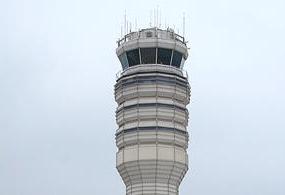|
|||||||||||||||||
|
|
|
|||
|
FAA Suspends Air
Traffic Controller At By Mike Mitchell |
||||
 |
March 25, 2011 - On early Wednesday morning two
passenger airliners were forced to land their aircraft
at
By
mid day DOT Transportation Secretary Ray LaHood ordered
the FAA to staff the tower with two controllers. "I
directed the FAA to place two air traffic controllers at
Ronald Reagan Washington National airport's control
tower on the midnight shift," said LaHood.
?It is not acceptable to have just one controller in the
tower managing air traffic in this critical air space. I
have also asked FAA Administrator Randy Babbitt to study
staffing levels at other airports around the country."
?The FAA is thoroughly investigating Wednesday?s early
morning incidents at ?As a former airline pilot, I am personally outraged that this controller did not meet his responsibility to help land these two airplanes. Fortunately, at no point was either plane out of radar contact and our back-up system kicked in to ensure the safe landing of both airplanes.? |
|||
| Live ATC Transmission | ||||
|
?Effective immediately, we are instituting an interim plan
to ensure we do not repeat another situation like the one at |
||||
|
?In addition, I have reminded all air traffic controllers that proper procedures dictate that they must offer pilots the option to divert to another airport if they do not make contact with the control tower. Finally, I have ordered a nationwide review of the air traffic control system to confirm the appropriate backup procedures and equipment are in place and in use. I am determined to make sure we do not repeat Wednesday?s unacceptable event.?
The National Transportation Safety Board on Friday opened
an investigation into an air traffic control service
interruption incident.
The last radio transmission made by the tower controller
before the service interruption occurred at 11:55 pm EDT on March 22.
At 12:04 am EDT on March 23, American Airlines flight 1012,
operating as a scheduled 14 Code of Federal Regulations part 121 flight
between Dallas-Fort Worth and DCA, was instructed to contact Following numerous attempts to contact the DCA tower, the flight crew executed a missed approach. The crew reported to TRACON their inability to make contact with the DCA tower; TRACON then vectored the aircraft back to the airport for another approach. The approach controller and the TRACON supervisor on duty made several attempts to contact the tower controller via telephone, but were unable to establish contact.
The TRACON approach controller advised the crew of American
flight 1012 that the tower was apparently unattended, and that the
flight would be handled as an arrival to an uncontrolled airport.
|
|
|
| ?AvStop
Online Magazine
Contact
Us
Return To News
|
|

